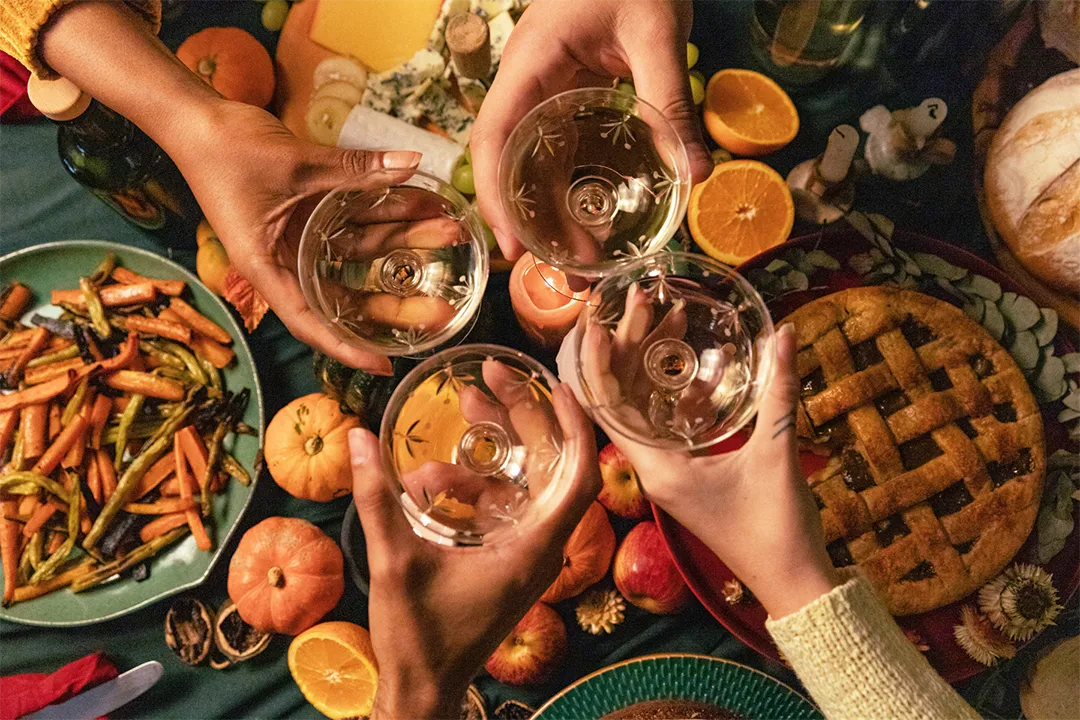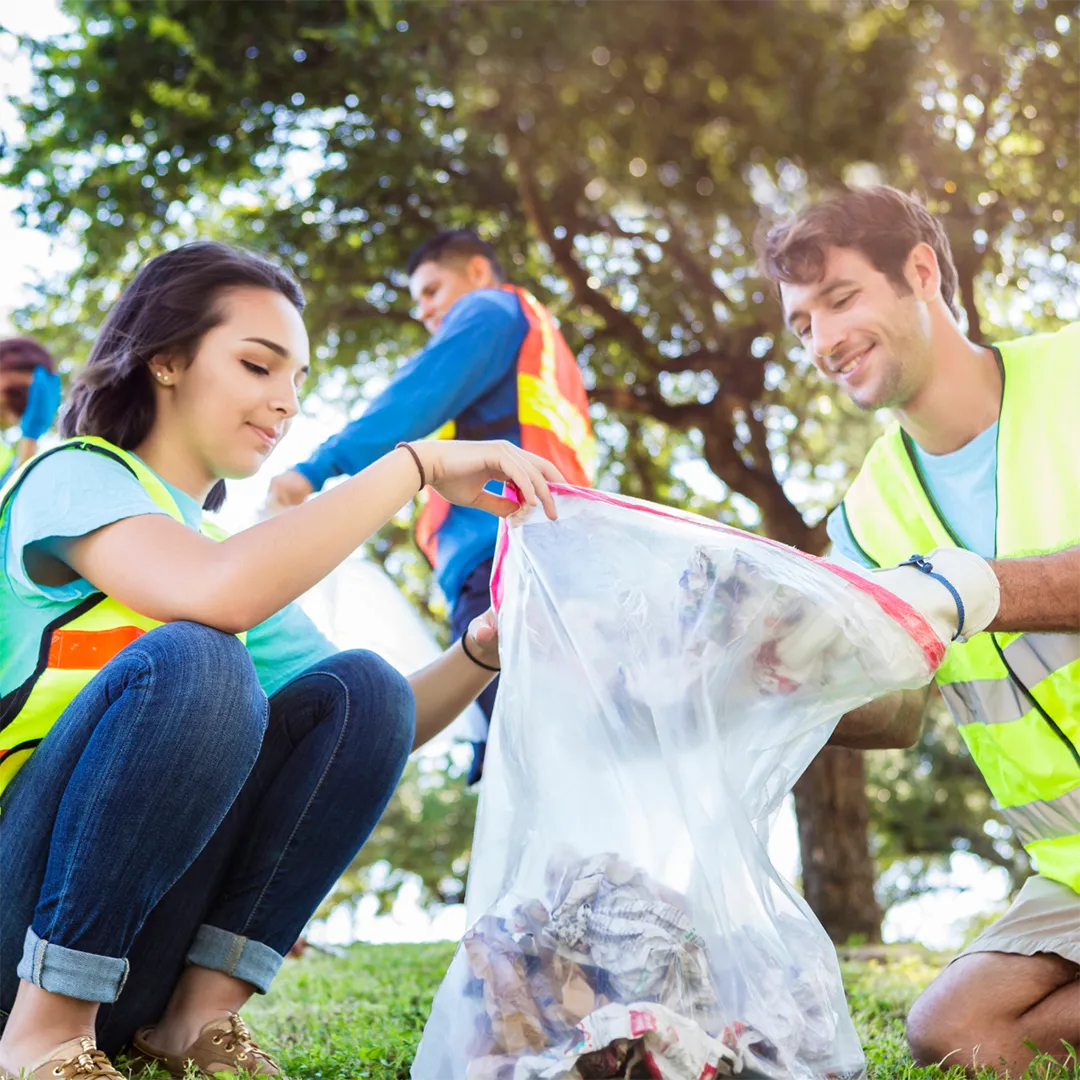
As the days get shorter and the air cools, families all across America look forward to Thanksgiving. Who doesn’t love feasting, friends, football, and fireside movies? In our hearts we know that Thanksgiving is more than a weekend of eating like kings – it’s an opportunity to reflect on our bond with the earth. Using November as a time to recognize our connection with nature encourages mindfulness – it necessitates awareness of our complete dependence on the earth and her gifts. As we celebrate the holiday, let’s examine what our connection to nature can teach us about gratitude.

The origin story: respecting the wisdom of Indigenous communities
While the historical Thanksgiving story involves tragic and inexcusable mistreatment of Indigenous people, American culture has assigned the holiday more palatable narratives over the years. The greatest is to celebrate nature’s harvest and express gratitude for our blessings, no matter how small.
One thing we should be especially grateful for is the wisdom and practices of Native American communities that preceded Spanish settlers and made our modern American lives possible. The original Thanksgiving story tells how early settlers learned important farming and harvesting techniques from Indigenous tribes. These skills allowed future generations to persevere and grow. Sharing crops that survived drought and storm throughout the year was a symbol of gratitude, trust, and respect. When honoring this tradition at the dinner table, let’s remember the gifts our precious planet offers, and the need for harmony among people and the earth.

The Thanksgiving harvest: biophilia in action
When farming was the most common form of labor, harvesting food was the central focus of most people’s lives. The harvest occurred during the fall, when crops would be ready to collect and eat, sell, or preserve for the upcoming year. Harvest festivals were vibrant, communal celebrations that featured feasts with freshly collected crops, dancing, singing, and spiritual rituals to honor the earth and ensure future abundance. Community members would use this time to strengthen social ties and pay tribute to laborers’ hard work. Often, there were games, storytelling, and even folk dances. It was a time of joy, rest, and togetherness after months of strenuous work.

Today, Thanksgiving continues this tradition by bringing people together to share meals. Tables full of seasonal produce—squash, pumpkins, apples, cranberries, and corn—reveal cycles of planting and reaping nature’s offerings. Sharing food is more than just nourishment; it reinforces a sense of community and reminds us how much we rely on the earth. Viewing meals with biophilia in mind enhances our appreciation for our food’s origins. It encourages us to savor each bite and recognize the often invisible sweat and tears that make our meals possible.
Giving back: connecting human beings, communities, and the planet
Native American traditions embody a deep respect for the earth and emphasize reciprocity with nature. Many tribes demonstrate this through ceremonies, rituals, and practices that focus on giving back. For example, the Lakota practice of the “Wopila” ceremony expresses gratitude and connection to the land and often involves sharing tobacco herbs. The Navajo engage in the Blessing Way, which celebrates the interconnectedness of all life and the pursuit of harmony. The Iroquois Green Corn Festival, also known as the “Green Corn Ceremony,” is a traditional celebration held by the Iroquois people to honor the corn harvest. These traditions embody reverence for nature, a belief in balance, and the responsibility to care for the land.
We can continue the tradition of giving back to the land and our fellows this fall season. Volunteering and donating are simple ways to express gratitude for the things we tend to take for granted: available food, neighborhood parks, hiking trails, service workers, wandering animals, and star-lit nights. By giving back through serving meals, supporting food drives, or preserving natural habitats, we become part of an interconnected system of sharing. These acts of generosity spread holiday cheer beyond our own tables and families. They foster a healthy and much needed sense of unity with our communities and the environments that sustain us.


As Brooker T. Washington said, “Those who are happiest are those who do the most for others.” Volunteering has been shown to improve mental health by fostering a sense of purpose, connection, and belonging. Offering acts of kindness promotes gratitude, and is a crucial antidote to our hyper-independent culture and self-serving tendencies. When we give goodwill to others, we may notice we’re the recipients of infinite, invisible fortunate occurrences every day – our first morning breath, a pet that’s eager to greet us, the coffee barista’s smile, a text from a loved one, or a generous driver that lets us pass in traffic.

Ancient advice: kiss the earth with your feet
As we gather around tables filled with seasonal foods, remember nature’s cycles and the abundance it gives us. A Vietnamese Buddhist monk named Thich Nhat Hanh’s suggested, “Walk as if you are kissing the earth with your feet.” This is an invitation to practice reverence for the earth. He encourages us to move with intention, fully present in each step, as if gently “kissing” or honoring the ground beneath us. Doing so creates a peaceful, harmonious relationship with our environment and nurtures a sense of respect and care for the planet.
The Thanksgiving holiday encourages us to honor our lands, appreciate the rainfall, and respect the work required to feed our communities. It’s a chance to set our busy lives aside and reconnect with nature’s rhythms, the cycles of birth, kinship, death, and birth again. Remember, biophilia shows us that natural settings inspire creativity and emotional well-being. Take time to immerse yourself in nature this holiday. Use plants and freshly cut flowers to decorate your home, and may they remind you of the harvest shared with loved ones at the dining room table. Create a festival of dancing, singing, and sharing abundantly with your neighbors. We need more thanksgiving in our lives!
Transform Your Space with Biophilia
Gratitude for nature begins with your environment. Let’s create something beautiful together.
